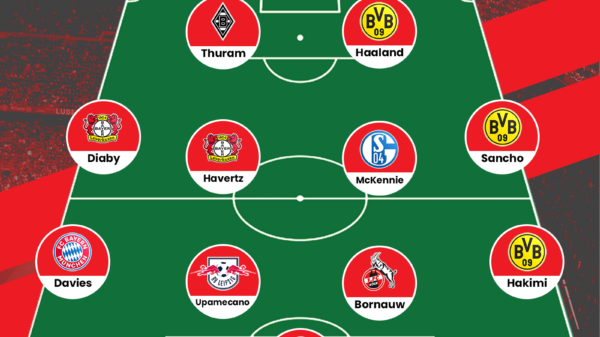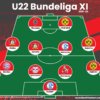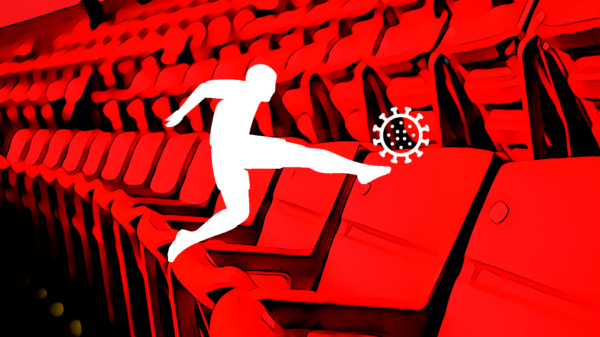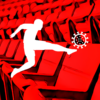A full house and an electric atmosphere greeted the two top teams of Germany and Europe in the UEFA Champions League Final. Bayern came into the game as favourites to win the game,and won a wonderful end-to-end contest.
A weakened Dortmund team started without their talisman and future Bayern player, Mario Gotze. Weidenfeller started at the back, with the usual back 4 of Pisczcek, Schmelzer, Subotic and Hummels in front of him. In midfield, Bender and Gundogan were the deeper pair, and Grosskreutz, Reus and Kuba were in the advanced roles. Up front, it was the Pole, Robert Lewandowski.
Bayern Munich started with a full strength team. Neuer at the back was protected by Lahm, Boateng, Dante and Alaba. The first choice combination of Schweinsteiger and Martinez started in the pivot. Mandzukic started up top, and behind him, Thomas Muller was flanked by ‘Robbery’, that is Arjen Robben on the right, and Franck Ribery on the left.

Line ups made via our very own Tactics Creator app. Click here to view!
Analysis
Borussia Dortmund started the game slightly out of character. The former German champions usually press their opponents with great intensity very high up the pitch in order to win it back quickly, but on this occasion, they chose not to press with the usual intensity. Of course, the press was there. Dortmund used one man to press the player on the ball, and the others quickly went for passing options. Usually, Dortmund get the others closer to the man in possession in order to pile up pressure on him, but this tactic may lead to a few open spaces, which Bayern are well capable of exploiting.
An aspect of the pressing was the showing of sides and allowance of certain space to the Bayern players. Obviously, the lack of intense pressing meant that Bayern enjoyed a lot more time on the ball (56%) and if they weren’t sheperded into less dangerous areas of the field, they could pull the Dortmund defence apart. Therefore, Dortmund looked to show Bayern into wide areas, and then close that space down, to break the attacks down. All in all, Dortmund made 20 interceptions over the course of the game, a number of them in wide areas.

The highlighted areas show the intercepts in the wide regions.
via CNN Football Club
This counter attacking outlook meant that Dortmund were automatically reduced to playing a reactive, or counter attacking role in the game. This approach initially yielded rewards. With Alaba venturing forward to join in the Bayern attacks, space was left behind him, and the likes of Kuba and Reus running into these spaces to play their passes to Lewandowski. As a matter of fact, a large number of their attacks (39%) originated down the right and side,with this being used as a conscious tactic to exploit Alaba’s attacking tendencies.
Bayern, on their part tried to reduce the threat posed to them from the quick Dortmund counters. In order to do so, they reduced the spaces between the defenders and midfielders to a large extent, with the defence pushing up a little more than usual. This also helped the Bayern players to pass the ball and stitch their moves better, as they had greater numbers in the midfield area. This attracted some of the Dortmund midfielders into the higher areas, as they moved forward to close down passing options, and made sure that the Bayern midfielders like Schweinsteiger could play raking passes to release their forward oriented players, and get closer to goal. Bayern did a great job building up their play in this way, and got close to the Dortmund goal on a number of occasions. As a matter of fact, 50% of all their shots were from inside the penalty area, and Dortmund had Weindenfeller to thank for a number of top class saves.
Bayern also did very well to keep pressure on the Dortmund defence, with the intensity of their pressing only increasing in the second half. Apart from this as well, the deeper players did well to keep the pressure up. They did so by occupying strategic positions on the edge of the penalty area. This meant that every time Dortmund players intercepted or broke up an attack, a Bayern Munich player was on hand to pick up the ball/challenge for it. The pressure told on Dortmund, and they gave the ball away on several occasions. The usually reliable Mats Hummels could only complete 69% of his passes. Overall, Dortmund completed only 72% of their passes, much lower than their usual average.
This constant pressure also meant that more and more Dortmund players had to drop deeper in order to defend effectively. By doing so, the distance between the midfielders and the striker, Lewandowski was far too great. In many parts of the second half especially, the Pole found himself battling 2 or 3 defenders to hold up the ball or find space. This rendered their attack quite impotent, and they couldn’t get close enough to goal. 50% of their shots were from outside the penalty area.
Another very crucial aspect of the game was Arjen Robben. The Dutchman was a central figure, as he was involved throughout the game, creating chances, missing them, getting an assist, and scoring a crucial late winner.
In the first half, he was deployed as a winger, and played as such. He generally stayed near the wing, but wasn’t as effective. Gotze’s replacement Grosskreutz was deployed on the left side of the Dortmund attack. This meant that he was playing on the same side as Arjen Robben, and was tracking him back, working hard to prevent the Dutchman space. In the second half though, Heynckes made a very good move, and allowed the Dutchman a free role. This sort of free role meant that Robben was constantly making runs in behind the defence, and these were quite difficult for the Dortmund defenders to pick up. Eventually, it was such a run after cutting inside that resulted in the winning goal for Robben.

Robben heat map in the First Half
via CNN Football Club

Robben Second half heat map
via CNN Football Club
Conclusion
In a game that was played at a tremendous tempo, Bayern played their normal game, and reaped the benefits. Astute changes on the part of their coach Jupp Heynckes were helpful too. Arjen Robben finally got the final monkey off his back, and Bayern are deserved winners.
Dortmund tried a different strategy, and probably erred on the side of caution. One can only wonder about what might have been if their star player Gotze was available.
Stats courtesy of squawka.com and whoscored.com
Click here to view more tactical analyses.
- Analysis: Are Chelsea’s pressing issues a concern? - October 5, 2020
- Has Financial Fair Play Been Worth It? - August 27, 2020
- Tactical Philosophy: Frank Lampard - May 20, 2020




























































